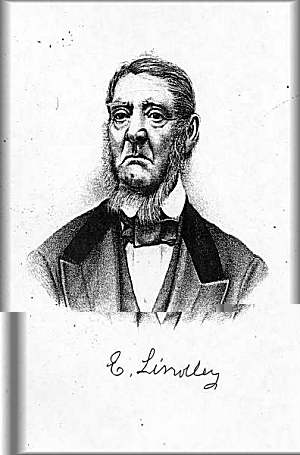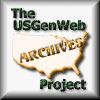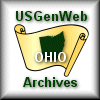|
Early History
The early history of Brunswick begins in the year 1796 when it was first surveyed. It was then that Abraham and John Freese explored the territory now known as Brunswick.
There we would see a typical Indian family such as frequented the forests in the years before the white man had set foot in this part of the Western Reserve. Hinckley was an ideal hunting ground for bear and deer, and many an Indian family spent some time in Brunswick while hunting in Hinckley, to lay up their stores of meat for the season.
Relics of their life have been picked up from time to time in the form of arrowheads, spearheads, tomahawks and flintstones. And some of the folks who did pioneer made some splendid collections of these articles. Many of those collections remain in the families or have been donated to museums. Avid Indian lorists can still find an arrowhead lying in the fields of Brunswick to this day, though most of the larger objects are no longer available.
It was in the years 1796 and 1797 when the Connecticut Land Company had laid out the territory in townships of five miles square. Purchased from the government on the 5th of September, 1795, the Connecticut Land Company received title to well over three million acres for $1,200,000 and proceeded at once to survey and lay out the townships. Before the Connecticut Land Company had made the purchase, the government had made grants of 500,000 acres in 1792 to those who had lost some property in Connecticut through the devastation of the Revolutionary War. These 500,000 were commonly called the Firelands, but strangely, all of the Western Reserve except the Firelands was disposed of by lottery with the exception of Cleveland and five other townships reserved for private sale. The first lottery was in February, 1798.
Moses Cleaveland was the agent for the Connecticut Land Company, hence the naming of the principal township in the Reserve in his honor.
From the year 1798, the land in the township of Brunswick was sold mostly in quarter sections of 160 acres at $1.25 to $3 per acre, but the purchasers did not arrive until 1814, as the war of 1812 interrupted the fulfillment of the plans. Although the war did not start until 1812, tribal disturbances were taking place from 1800 on, caused by the dissatisfaction of one tribe over another in the final claim on the lands. The Iroquois Indians had held sway on the land east of the Cuyahoga, but the other tribes of Wyandot, Delaware, Chippewa, Ottawa, Miami and Shawanee Indians had control over land west of the Cuyahoga, so the government had been hard put to settle all claims satisfactorily.
However, in the end, barrels of whisky, merchandise, money and sometimes even military pressure eventually quieted all concerned and with certain lands reserve for the very own, the Indians gradually grew accustomed to the intrusion of the white man and learned to live more peaceably.
Among the first settlers were the brothers Solomon and Frederick Deming who arrived in Brunswick March 4, 1815, to be followed in the summer by John Hulet, Seymour Chapin, John Stearns, Andrew Deming and Henry Bogue with their families.
Before the year 1815 ended, they were joined by James Stearns, Solomon Harvey, Henry Parker, Samuel Tillotson, Ephraim Lindley and W. P. Stevens. Of course, the first surveyor, Abraham Freese, was among the first settlers as well.
These hardy fold proceeded at once to clear the land and build log cabins. They planted crops with potatoes really the biggest crop in the beginning. Moses and Cornelius Sherman turned down the chance to buy Cleaveland land to come to fertile Brunswick to raise potatoes, potatoes, potatoes.
Clearing the land took all the manpower that could be mustered. The log rolling events sometimes lasted for days, while chopping bees lasted for weeks. But everybody in the township would gather while the men manipulated the axe and saw and the women kept the cook fires going with venison and wild turkey. Whiskey was the chief beverage. It was believed at one time that no barn could be raised without a good supply of whiskey being on hand.
But it so happened that Captain John Stearns overlooked this detail when he was ready to raise his barn...and as none could be procured nearer than Talmadge, a two-day journey, he apologized profusely to his neighbors who, after some hesitation and reprimanding, finally raised the barn.
The name Brunswick is derived from a principality in Germany, so that our pioneers must have been influenced by German descent to have liked that name the best of those submitted for consideration. It was said that it was chosen over the other contenders because "it sounded best."
A journey to Cleveland in those pioneer days took two and one half to three days so it was seldom the women went shopping. When Sarah Partridge and Samuel Tillotson, with their ten children started from Lee Massachusetts, it took them six weeks to come to Brunswick.
The journey was made with two yoke of oxen and a span of horses. A cop was also brought along, at first tied to the wagon but later freed. She was milked night and day and any milk left over was put into a churn and made into butter by the motion of the wagon.
The trip from the east for some folks was not without benefits. Melinda Harvey and Henry Parker first met on the journey west and were the first couple to be married in Brunswick Township, this taking place March 16, 1816.
It was the custom of all married ladies at the time to wear caps. But Melinda Parker would not wear a cap until they had their farm paid for, as caps in those days cost plenty, as we are told, and were quite the thing.
The first child born in Brunswick was George, son of Solomon and Polly Stearns Harvey.
The social side of life in these early pioneer days consisted of sleigh rides, house parties and the real old fashioned dancing with just a fiddler providing music. Most of these events were in conjunction with a house raising, a chopping bee or log rolling event as the distances between neighbors was made even greater by the fact that roads were simply a trail of blazed trees.
The felling and chopping of trees was not without mishap as Isaac Hulet's little Johnny and Cornelius Sherman's son Emory were both killed by falling trees.
A tale of heroic women is found in the annals of Brunswick history and tells of Rhoda Wells, wife of Morris Squire, who came from Shelby, New York, to Brunswick with her four children, the youngest 9 months old. They arrived in Cleveland by boat after a stormy voyage. They stayed overnight in a log tavern in Cleveland. She was very uneasy regarding the tavern keeper, especially since she had $2,000 in a belt she wore around her waist. She was unable to sleep for fear she would be robbed and murdered. She asked to be called in time to catch the stage next morning early for Brunswick. But the stage was full and she was not called. This unnerved her all the more and she set out with her four children on foot, determined to stay no longer. She walked as far as Brighton before she found someone to drive her to Brunswick, and then it cost her $2, a very large fare in those days.
More about women with the story of Mrs. Maria Hulet who had to carry water quite some distance from her cabin. So she decided to dig a well close by. When she had dug down too deep to be able to throw the dirt out, she pressed her children into helping her by pulling up a tin pail on a rope and emptying the dirt for her. With crude implements and slow tedious methods, she finally reached a depth of 30 feet and found good water. This well was still in operation in the 1930's. Needing stones, she gave a neighbor a small Inn Furnace to haul a couple of loads. But she didn't know how to stone up the well. When a stranger passing offered to show her how, she took up the offer and exchanged a hearty meal for the work.
The same Maria Hulet was looking out of her cabin window one day and saw a dog panting as if he had been chasing an animal. Sure enough, she saw a large buck deer foaming close by. She took her axe in hand and ordered the dog to throw the deer. With one blow, the deer succumbed. Mrs. Hulet proceeded at once to skin the carcass and was in the midst of this task when an Indian approached and claimed the deer as his, as he had tracked it down. After bargaining with the Indian, she was left with half the kill while the Indian walked off with skin and hindquarters.
In the year 1819 the first semblance of a store was opened by Thomas Stearns. Just one room of his log cabin represented the store at first. But the demand of the travelers on the Cleveland-Columbus turnpike compelled him to expand this to include a tavern, as traveling in those days was quite a dusty and thirst-provoking experience. Five years later, the first real store was built by Archibald Mills and he did a grand business. Brunswick also boasted a distillery founded in 1828 with a capacity of 12 gallons daily. But Mr. Woodbridge, who started it, finally closed it up after a few years' operation as the demand did not justify the manufacture.

Despite the hardships of life in those early days (little wonder the cemeteries are lined with stones telling the tale of short lives) the settlers were determined to make Brunswick a real home. On April 6, 1818, the first election was held with 19 voters. They were Captain John Sterns, Solomon Deming, John Hulet, Harvey Stebbins, Reverend Jacob Ward, Thomas Stearns, Major Andrew Deming, Joel Curtis, Elijah Hull, Henry Bogue, Ephraim Lindley, James Stearns, George Baldwin, Solomon Harvey, Horace Root, Darius Francis, Henry Parker, Daniel Stearns, and John Hulet, Jr.
John Stearns and Jacob Hulet were elected Justices of the Peace; Darius Francis was named treasurer; John Stearns, assessor; Henry Parker, constable' John Hulet, John Stearns and Solomon Deming, trustees; Samuel Tillotson and W.P. Stevens, overseers of the poor; H. Root and H. Bogue, fence viewers.
From then on the township began to become more and more like the hometowns left behind in New England. Land, in the 1800's, sold for $2.50 and acre but didn't bring many buyers at the "exorbitant" price.
Captain Stearns owned 1,300 acres of land in the western portion of the township and it was he who donated the land for Brunswick's Westview Cemetery. The land now known as the Wolff Development and Eagle Oakes is on the land owned by Stearns. The Eastern half of the township was unsurveyed until after 1817 when it was owned by three men. James Brooks arrived in 1825 and bought 135 acres at the Bennett's Corners area; the Shermans settled south of that near the present intersection of Route 303 and West 130th Street.
The northwest corner was settled in about 1830 and most of the homes there were frame, with the lumber purchased from the saw mills in Liverpool Township. The northwest corner was called Beebetown.
Even in the "booms" of the 1950's and 1960's, the development followed the same pattern of not pattern, with houses springing up in all directions making the extension of utilities and transportation difficult. But, by no means as difficult as settling the wilderness of Brunswick Township.
| 


